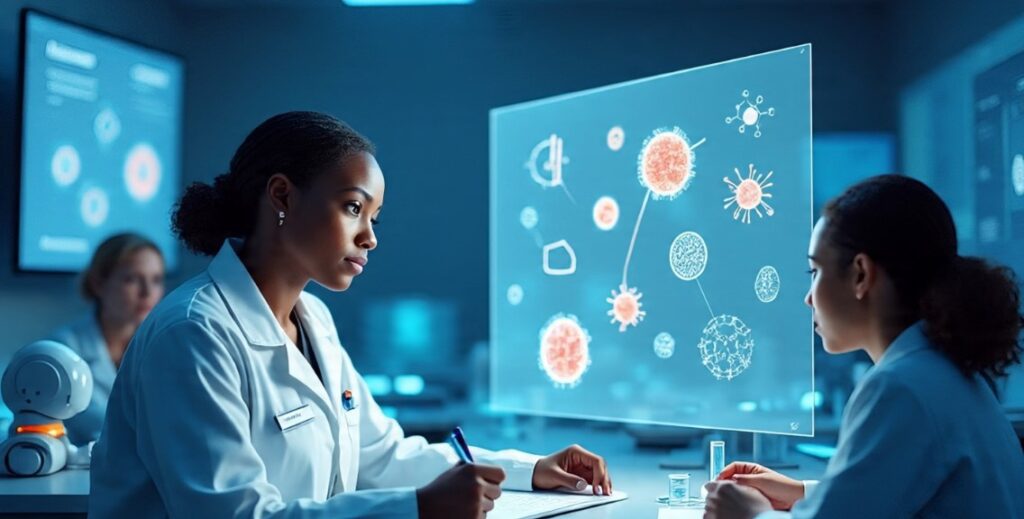AI Job Cuts 2025 Predictions: Introduction
The rapid advancement of artificial intelligence (AI) is transforming industries worldwide, leading to significant discussions about its impact on employment. AI job cuts 2025 predictions vary widely, but one thing is certain: automation driven by AI will reshape the workforce in significant ways. This in-depth analysis explores the projected impact of AI on various sectors in 2025, examining which industries are most vulnerable to automation-driven layoffs and offering insights into potential mitigation strategies. We will delve into specific sectors to understand the nuanced effects of AI and provide a clearer picture of the future of work.
AI Job Cuts 2025 Predictions: Sectors Most at Risk
Several sectors are expected to experience significant job displacement due to AI-driven automation in 2025. The level of risk, however, is not uniform across all industries. Some sectors are more susceptible to automation than others. According to a recent report by McKinsey, approximately 30% of jobs could be automated by 2030, with some sectors facing significantly higher disruption. This means that AI job cuts 2025 predictions should take this concerning statistic into account.
Manufacturing and Logistics
The manufacturing and logistics sectors are prime candidates for extensive AI-driven automation. Repetitive tasks, such as assembly line work and warehouse operations, are easily automated using robots and AI-powered systems. This could lead to a significant reduction in the need for human labor in these sectors. The integration of AI-powered predictive maintenance systems can further minimize downtime by anticipating and resolving issues before they occur, leading to more efficient operations with fewer human interventions.
Customer Service and Support
AI-powered chatbots and virtual assistants are rapidly replacing human agents in customer service roles. These AI systems can handle a large volume of inquiries simultaneously, providing 24/7 support and reducing the need for large customer service teams. While some jobs will be lost, new roles focusing on AI training and maintenance are likely to emerge.
Transportation
The self-driving vehicle revolution is poised to significantly impact the transportation industry. Autonomous trucks, buses, and cars are already being tested and are expected to be more widely adopted by 2025. This automation could displace numerous drivers, leading to a significant reduction in employment in this sector. However, new roles in the development, maintenance, and regulation of autonomous vehicles are expected to emerge.
Data Entry and Processing
Jobs involving repetitive data entry and processing are highly susceptible to automation. AI-powered systems can quickly and accurately process large volumes of data, significantly reducing the need for human intervention. The impact will be felt across industries, from healthcare to finance, where significant amounts of data are processed daily.
AI Job Cuts 2025 Predictions: Mitigation Strategies
While some job losses are inevitable, several strategies can mitigate the negative impact of AI-driven automation. Reskilling and upskilling initiatives are crucial to equip workers with the skills needed for the jobs of the future. Focusing on roles that require creativity, critical thinking, and complex problem-solving will be essential. Furthermore, government policies focusing on worker retraining and support for displaced workers will be vital to navigate this transition.
“The future of work will be defined by a collaboration between humans and AI,” says leading AI expert Dr. Evelyn Jones of MIT. “While some jobs will be automated, new opportunities will emerge, requiring a shift in focus towards human-centric skills.”
Investing in education and training programs that focus on AI-related fields will be vital to ensure that the workforce is equipped to meet the demands of the changing job market. Moreover, developing strong social safety nets to support those displaced by automation will be crucial in ensuring a just and equitable transition.
For more information on preparing for the future of work in the age of AI, please visit this article on the impact of AI.
AI Job Cuts 2025 Predictions: Conclusion
AI-driven automation will undoubtedly lead to significant changes in the job market by 2025. While some sectors are more vulnerable than others, proactive measures such as reskilling initiatives, government support, and a focus on uniquely human skills are crucial to mitigating the negative impact and ensuring a smooth transition to a future where humans and AI work together. Understanding the AI job cuts 2025 predictions and preparing accordingly is essential for both individuals and businesses.
For further insights on technological advancements and their impact on society, refer to this informative article on Wikipedia: Technological Singularity.
Frequently Asked Questions
Which sectors are most vulnerable to AI-driven job cuts in 2025?
Manufacturing, logistics, customer service, transportation, and data entry are expected to experience significant job displacement due to AI automation in 2025.
What strategies can mitigate the negative impact of AI on employment?
Reskilling and upskilling initiatives, government support for displaced workers, and a focus on uniquely human skills are crucial for mitigating the negative impacts of AI on employment.
What are some emerging job roles related to AI?
New roles in AI training, maintenance, development of autonomous vehicles, and AI-related fields are emerging as a result of AI advancements.
What is the overall prediction for AI-related job losses in 2025?
While precise figures vary, predictions suggest significant job displacement in certain sectors, highlighting the need for proactive measures to adapt to the changing job market.



